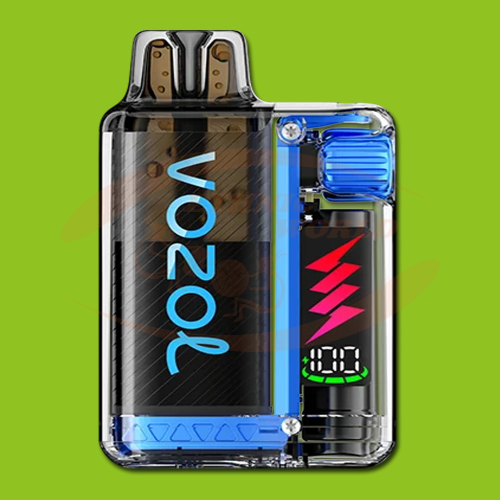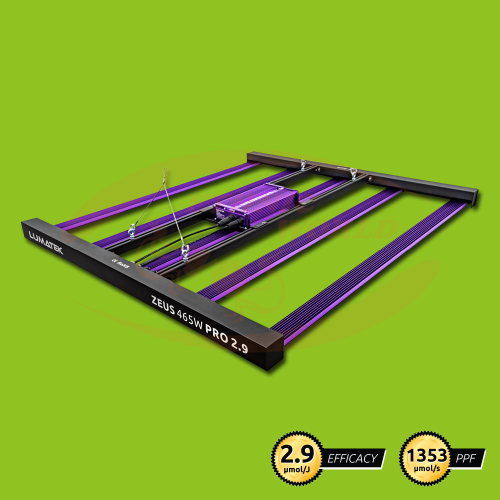
As mentioned earlier, many types of LEDs emit a fixed spectrum of light that works for both the vegetative (growth) and flowering phases. This means that you can use the same lamp for the entire development of your plants, from planting to harvest.
While many consider this to be the most practical option, some growers prefer to fine-tune their LED lamps for best results and to optimise their light efficiency at each stage of growth. To this end, some commercially available LED lights have a switch to activate a light spectrum for the vegetative or flowering phase.
Other factors to consider in each growth phase are
A) LED LAMPS AND SEEDLINGS
Once the seeds have germinated, your future cannabis plants will need light to grow. However, compared to mature plants, seedlings are much more sensitive to excess light. This is why you need to be careful when starting their growth with powerful LED lights.
If it is possible to reduce the light intensity of your LED lamp, do so. If you can't, move the lights higher, away from the seedlings. Be careful not to put them too high, however, as you risk growing plants that are too thin and slender.
Also, if your LED has a switch to activate a spectrum for the vegetative or flowering phase, set it to the vegetative phase, which normally gives a 'cooler' bluish light, ideal for this early stage of development. Set the timer for 18 hours of light per day and 6 hours of darkness.
When the seedlings become larger, stronger and ready for the vegetative growth phase, gradually increase the light intensity.
GROWING WITH LEDS: WHAT TO CONSIDER IN EACH GROWTH PHASE
B) LED LIGHTS DURING THE VEGETATIVE PHASE
Set the lights to 18 hours of light per day and 6 hours of darkness. Some growers prefer light cycles of 20 to 24 hours per day to maximise vegetative growth.
Always check the development of your plants. If all goes well, they should become strong, healthy and lush. If they become thin and stubby, they are probably not receiving enough light. Increase the intensity by lowering the lamps towards the top of the plants or by using the switch, if your lamp model is equipped with one.
The length of the vegetative phase of your plants normally depends on the space you have available. Technically you can grow your plants in 18-24 hours of light for as long as you like, but there will come a time when you have to move on to flowering, otherwise they will get too big. Be aware that some cannabis strains can stretch considerably (double or triple in height) in the first few weeks of flowering. Take this into account when you decide to set the timer for the flowering phase.
C) LED LIGHTS FOR THE FLOWERING PHASE
Photoperiodic cannabis begins to flower in late summer, when the days start to get naturally shorter. In indoor cultivation, however, the grower will have to force flowering by setting the lighting programme to 12 hours of light and 12 hours of total darkness. If your LED lamp has a bloom switch, use it
When plants are flowering indoors under a 12-12 light cycle, it is very important that the 12 hours of darkness are never interrupted. So make sure that no outside light enters your cupboard or greenhouse. This could force flowering plants to resume vegetative growth or cause other problems such as hermaphroditism.
If your LED has a dimmer switch, now is the time to turn the light on full or dim it to the recommended distance for the flowering phase. If you are unsure of the distances, almost all grow light manufacturers provide recommendations.
Important: if you change anything in the lighting, for example increase the intensity and/or lower the position, make sure you do it gradually over a few days rather than all at once. Changing too suddenly can put undue stress on the plants.
AUTO-FLOWERING AND LED
If you grow auto-flowering varieties rather than photoperiodic varieties, you won't have to worry about switching to a 12-hour on/off light to start flowering. In fact, you can leave your autoflowering plants with 18-24 hours of light per day until harvest. And again, if your LED light has a bloom switch, you should use it as soon as your autoflowering plants start to bloom. This will increase yields.
LED LAMPS COMPARED TO HID LAMPS
HID lights, such as the MH/HPS lights used for cultivation, are still widely used because they are cheaper than LEDs and are still reliable for growing high quality marijuana. Also, grow kits almost always include HID lights, which is why many beginning growers start with these lights rather than LEDs.
If you are considering switching to LEDs, here are some things to consider.
THE HEAT PRODUCED BY HID LAMPS CAN HAVE ITS ADVANTAGES AND DISADVANTAGES
As mentioned earlier, HID lamps produce a large amount of heat. So if heat is an issue in your grow room, we highly recommend LED lights. This could save you money on air extraction and cooling systems. On the other hand, if you are growing in a cold environment, your decision to use HID lights may simply be because they make your grow room more comfortable for your plants, without the need for additional heating systems.
WHICH LIGHTS GROW THE BEST (AND BIGGEST) BUDS?
Are there differences in bud quality and yields with LEDs compared to HPS lights? Some growers claim that HPS produces better yields and "nicer buds" than LED. But there are also those who say that while HID may give higher yields, LEDs give better tasting buds and/or better overall quality. Of course, what is really "better" is open to interpretation.
HOW TO AVOID PROBLEMS WHEN GROWING WITH LED LIGHTING
Modern LED lamps, such as COB lamps, can emit light as bright as HID lamps. If your plants are too close to the LEDs, you risk causing "light burn" with discoloured and bleached leaves, nutritional deficiencies and all sorts of growth problems. This is why it is very important to keep LEDs away from cannabis plants.
There is no distance recommendation that works for all types of LED lights, as they vary greatly from model to model. It depends on how much light your LED emits, whether or not you have lenses and reflectors, etc. The manufacturer of your lamps should advise you on the best distances to foliage, either on the instructions provided in the packaging or on their website. As a general rule, however, most LEDs are kept about 30-45cm from the tops of plants to ensure healthy and vigorous growth.
Our LED KIT is our best tip of the day! Happy growing to all!





















